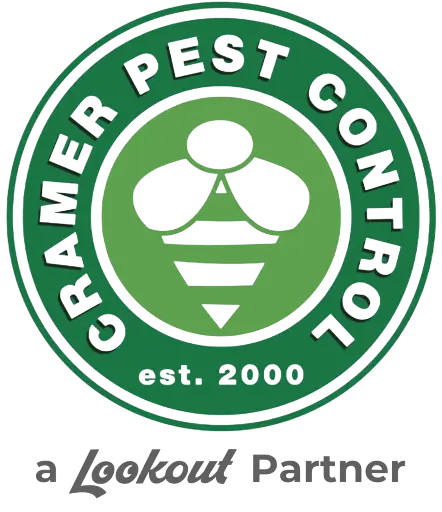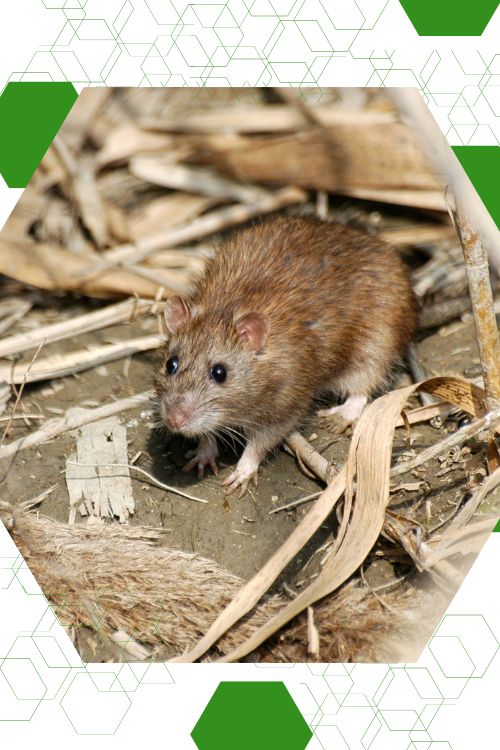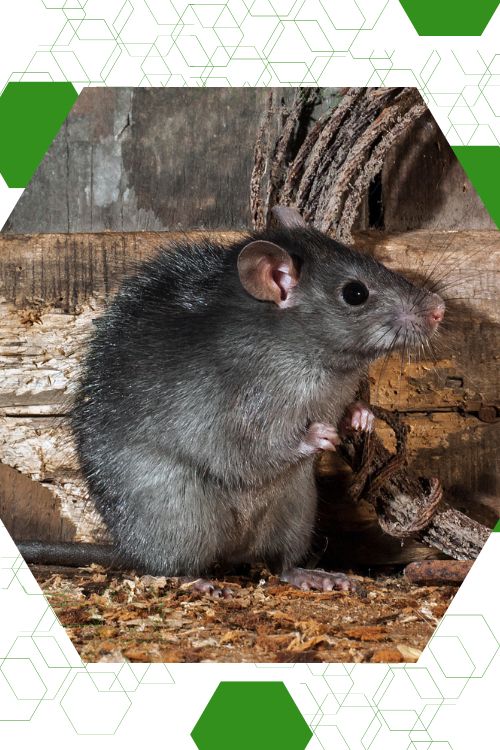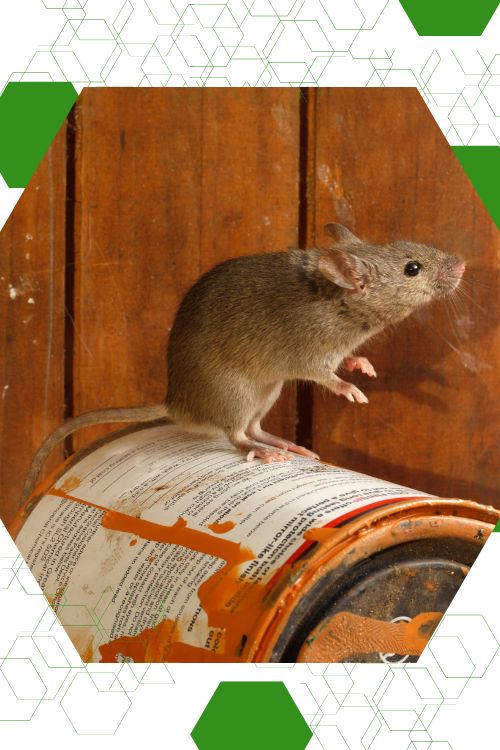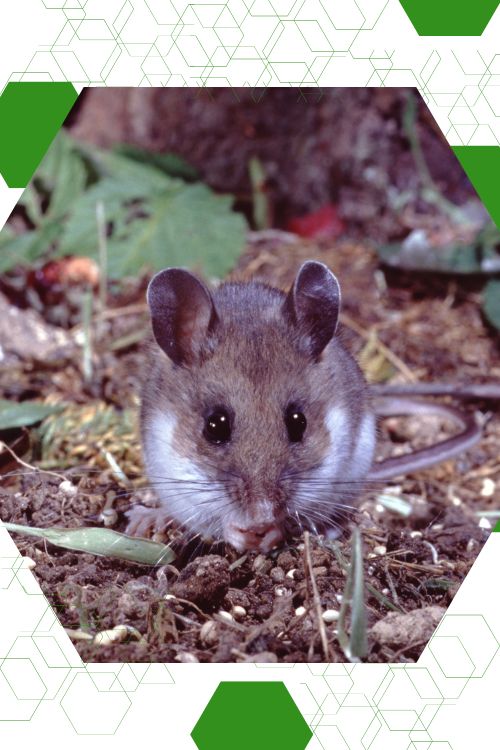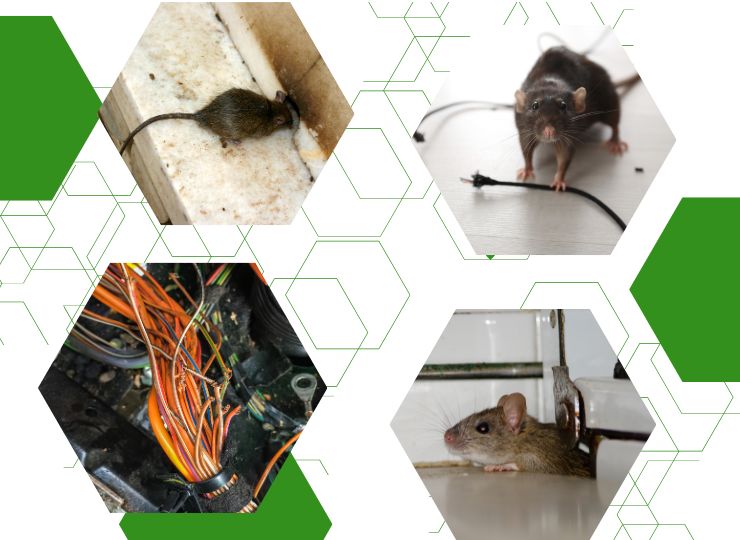Know Your Pest:
Everything About Rats and Mice
When it comes to household pests, rats and mice are amongst the most destructive. These vermin spread disease, damage wiring, and can cause thousands of dollars of damage in a surprisingly short amount of time. Because of the severity of an infestation it is important for homeowners to know how to recognize the signs of an infestation, know how to prevent rats and mice from taking up residence in the first place, and know what to do if one happens.
This article will take a deep dive into rats and mice as pests and provide you with everything you need to know! Want to learn about something specific? Use the index to jump to the section of interest. Do you already have an infestation and need it fixed? Contact a professional pest control company and get your rat or mouse problem handled fast.
Common Species of Rats and Mice in South Carolina
Homeowners in South Carolina are most likely to encounter a few specific rodent species: the Norway rat, roof rat, house mouse, and deer mouse. Understanding the behaviors, habitats, and physical characteristics of these pests can help homeowners identify and address infestations effectively.
Norway Rat (Rattus norvegicus)
The Norway rat, often called the brown rat, street rat, or sewer rat, is one of the largest rodent species found in South Carolina homes. These rats have large, heavy bodies with coarse brown or gray fur and lighter-colored undersides. They can grow up to 9 inches in length, not including their short, thick tail.
Known for their burrowing habits, Norway rats tend to live at ground level, preferring basements, crawl spaces, or the foundations of buildings. In outdoor areas, they burrow into the soil to create intricate tunnel systems that can undermine foundations or other structures.
These rats are opportunistic omnivores, eating everything from grains and meat to garbage. They often get into trash bins and food storage areas, making them a frequent nuisance in both urban and rural environments. The Norway rat is particularly drawn to areas with readily available food and water, and their size and strength allow them to gnaw through various materials like wood, insulation, and electrical wiring, leading to costly property damage.
Roof Rat (Rattus rattus)
In contrast to the Norway rat, the roof rat is more agile and prefers to live in elevated areas. This sleek rodent, also known as the black rat, has a leaner body and typically sports dark brown or black fur. Roof rats are smaller than Norway rats, measuring about 6-8 inches in body length, with long, thin tails often extending longer than their bodies.
Roof rats are excellent climbers, and are found nesting in attics, rafters, and along rooflines. They may enter homes through tree branches, power lines, or gaps in roofing, and are common in coastal and wooded areas of South Carolina.
These rats prefer a diet rich in fruits, nuts, seeds, and vegetables but will eat a variety of foods.
Homeowners may notice their presence through gnaw marks, droppings, or nighttime scurrying sounds in attics or walls.
House Mouse (Mus musculus)
The house mouse is one of the smallest but most troublesome pests for South Carolina homeowners. Typically gray or light brown, with a slender body and large, rounded ears, house mice are around 2.5 to 4 inches long, not including their long, thin tails. These mice are highly adaptable and can thrive in nearly any environment, from rural farmlands to suburban homes.
House mice tend to nest inside homes, particularly in secluded areas like wall voids, attics, or behind large appliances. They make nests from soft materials like paper, fabric, or insulation. Their small size allows them to squeeze through even the tiniest cracks or gaps, making entry into homes easy.
House mice primarily feed on grains, seeds, and cereals, but they will nibble on almost anything available, contaminating food sources and leaving behind droppings and gnaw marks.
Deer Mouse (Peromyscus maniculatus)
Though less common indoors than the house mouse, the deer mouse can still be a problem for South Carolina homeowners, particularly those living near wooded or rural areas.
Deer mice are similar in size to house mice but have distinct two-tone fur, with a white belly and brown or grayish back. They also have larger ears and eyes compared to house mice.
Deer mice prefer outdoor habitats but will enter homes, garages, or sheds during colder months in search of warmth and food. Like house mice, they build nests from soft materials, often in storage areas or attics.
These mice are primarily nocturnal, foraging for seeds, fruits, and insects. While less likely to infest homes than other rodent species, deer mice are known carriers of hantavirus, making their presence a serious health risk.
Identifying Rat and Mouse Infestations
For homeowners trying to determine whether they have rats or mice in their homes, a few key characteristics can help:
Droppings:
- Norway Rat: Larger, blunt-ended droppings, around 3/4 inch long.
- Roof Rat: Smaller, pointed droppings, typically 1/2 inch long.
- House and Deer Mice: Tiny, rod-shaped droppings, around 1/8-1/4 inch long.
Gnaw Marks:
- Norway and Roof Rats: Larger teeth marks on wooden structures, wiring, and food containers.
- House and Deer Mice: Smaller gnaw marks, often on baseboards, cupboards, and food packaging.
Nest Materials and Locations:
- All species use similar materials (shredded paper, fabric, insulation)
- Norway and Roof Rats often nest in basements or attics
- Mice prefer inside walls, attics, and stored bo
Noises and Activity Patterns:
- Rats: Often heard at night scurrying within walls or in attics. Roof rats may be heard in elevated areas, while Norway rats are more likely to be active near ground levels.
- Mice: Soft scurrying noises at night, particularly in walls, ceilings, or behind appliances.
Health Risks and Property Damage Caused by Rats and Mice
Rats and mice are more than just a nuisance; they pose serious risks to both your health and your home. These pests spread dangerous diseases, contaminate food supplies, and cause extensive structural damage.
Health Risks of a Rodent Infestation
Rats and mice are notorious carriers of diseases that can be transmitted to humans, either directly through contact with their droppings, urine, or saliva, or indirectly through fleas, ticks, and mites that infest the rodents.
Hantavirus:
Primarily carried by deer mice, this virus can cause severe respiratory issues and kidney damage, and is spread through exposure to rodent droppings, urine, or saliva.
Leptospirosis:
Both rats and mice can spread this bacterial infection, which can lead to liver and kidney damage in humans. It’s transmitted through contact with water or food contaminated by infected rodent urine.
Salmonella:
Rodents often contaminate food and food preparation surfaces with their droppings, leading to outbreaks of foodborne illnesses.
Rat-bite fever:
Although rare, direct contact with rats—through bites or scratches—can result in rat-bite fever, a bacterial infection that can cause fever, vomiting, and muscle pain. Never attempt to handle rats.
Allergies and asthma:
Rodent dander, fur, and waste can exacerbate respiratory conditions, such as asthma, and trigger allergic reactions in sensitive individuals. The presence of rodents in the home worsens air quality, particularly in enclosed spaces like attics and basements.
Property Damage Caused by Rodent Infestations
In addition to health risks, rats and mice are highly destructive pests that can cause extensive damage to your home’s structure and contents through their constant gnawing and nesting behavior.
- Structural damage: Both rats and mice have strong teeth that they use to gnaw on a variety of materials. This gnawing can lead to:
- Electrical wiring damage: One of the most severe risks is their tendency to chew on electrical wires, which can not only destroy appliances and cause malfunctions but also poses a risk of electrical fires.
- Insulation damage: Rodents frequently nest in insulation found in walls, attics, and crawl spaces. In more severe cases the insulation will need to be replaced as it may be impossible to clean.
- Foundation and wall damage: Norway rats, in particular, are known for burrowing and creating tunnel systems that can weaken the structural integrity of your home’s foundation and walls.
- Damage to personal belongings: Beyond structural concerns, rodents also cause significant damage to furniture, appliances, and personal items.
- Furniture and fabrics: Rats and mice will gnaw on wooden furniture, upholstery, using them for nesting materials.
- Appliances: The insulation and wiring inside appliances can also fall victim to rodents, causing damage that may require costly repairs or replacements.
- Stored items: Items in attics, basements, and garages, such as books, clothing, and decorations, are at high risk for contamination and destruction when rodents make nests in storage areas.
- Automobile: Rodents are known to invade parked cars, especially those left unused for long periods.
- Wiring damage: Rats and mice can chew through car wiring, causing electrical issues and costly repairs.
- Engine nesting: Rodents may nest under the hood or inside the engine, using insulation or other materials, which can lead to blockages or mechanical damage.
- Interior damage: Rodents may chew on upholstery and leave behind droppings, causing contamination and odors.
What to Do If You Suspect a Rodent Infestation
If you have noticed signs of a rodent infestation the best solution is to work with a professional pest control company. Don’t wait for the problem to go away by itself – rats and mice reproduce quickly and a small infestation can quickly turn severe.
A reputable local pest control company will not only have the tools and training to get rid of rats and mice but will be able to perform exclusion services that prevent them from returning.
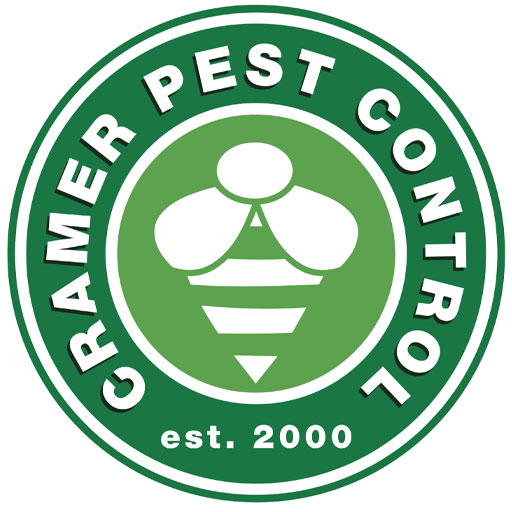
Know Your Pest: Everything About Rats and Mice in North Carolina and South Carolina
Protecting North Carolina and South Carolina
